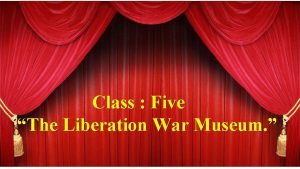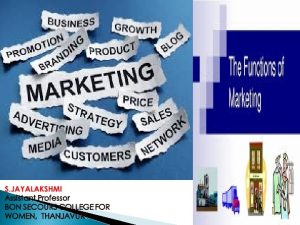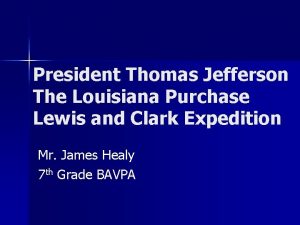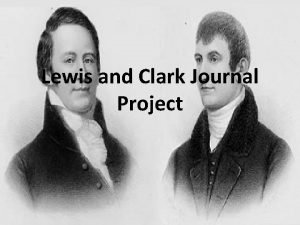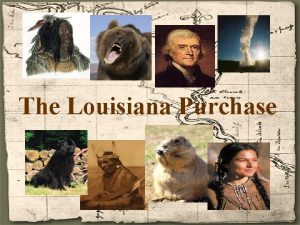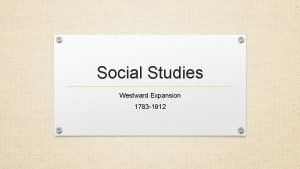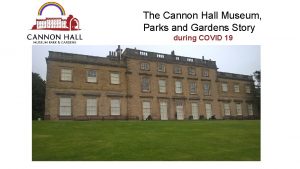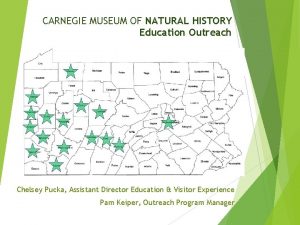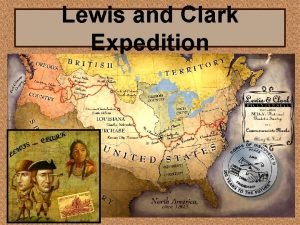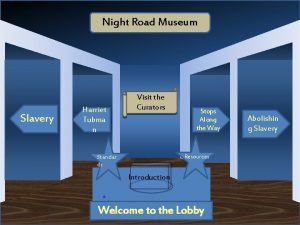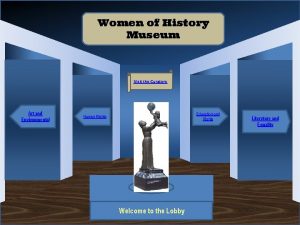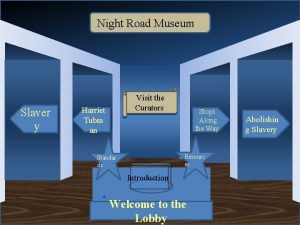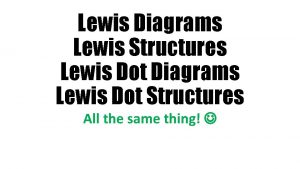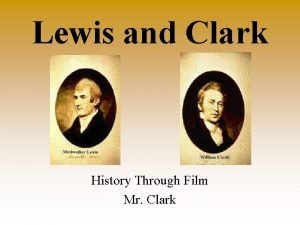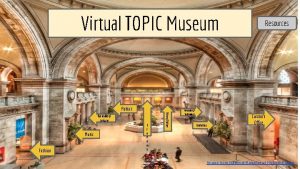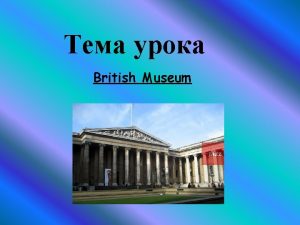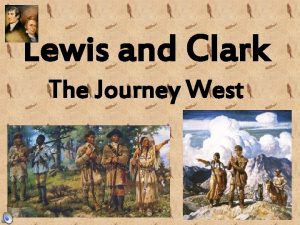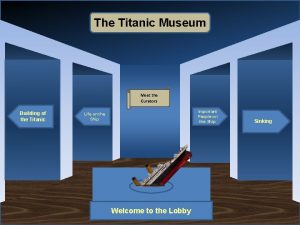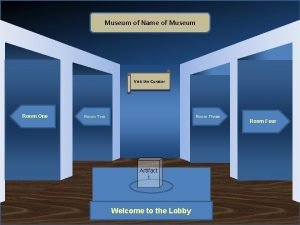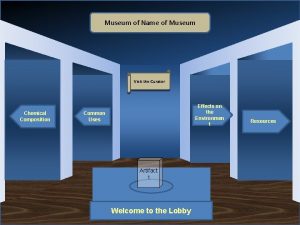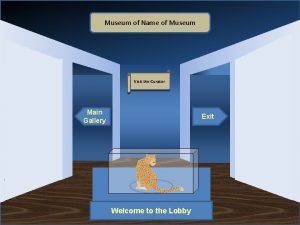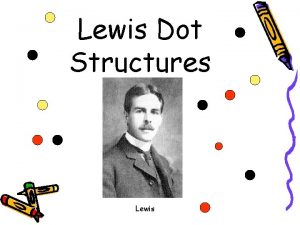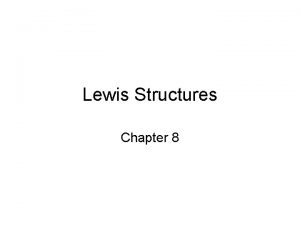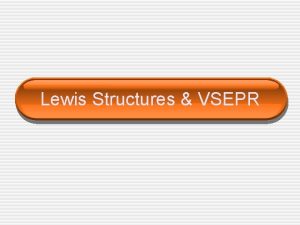Lewis and Clark Historical Museum Visit the Curators






















- Slides: 22

Lewis and Clark Historical Museum Visit the Curators Meet the Crew The Louisiana Purchase Native Americans Museum Entrance Welcome to the Lobby Discoveries, Geography, and Tools

Name of Museum Alyssa Ried, Katie Deiner, Mary Voss Hello! Welcome to our Virtual Lewis and Clark Historical Museum. The curators, Alyssa, Katie, and Mary are all students at Bradley University. This Museum was made following the rubric provided in ETE 335 – Social Studies Methods to give you the best information about Lewis and Clark as possible. We hope you enjoy your visit! Back to Lobby Note: Virtual museums were first introduced by educators at Keith Valley Middle School in Horsham, Pennsylvania. This template was designed by Lindsey Warneka under the direction of Dr. Christy Keeler during a Teaching American History grant module. View the Educational Virtual Museums website for more information on this instructional technique.

Name of Museum Meet the Crew Back to Lob by

Name of Museum The Louisiana Purchase Artifact 5 Back to Lob by Artifact 6 Artifact 7

Name of Museum Native Americans Back to Lob by

Name of Museum Discoveries, Geography, and Tools Artifact 11 Back to Lob by Artifact 12 Artifact 13

Name of Museum Seaman Insert Artifact Picture Here • Pictured above is a drawing down by Lewis of his dog, Seaman. • In preparing for the expedition, Lewis visited President Jefferson’s scientific friends in Philadelphia for instructions in natural sciences, astronomical navigation and field medicine. • It is believed that it was during this period that Lewis, for “ 20$” purchased Seaman, his “dogg of the newfoundland breed” to accompany him to the Pacific. Back to Room 1

Name of Museum Meriwether Lewis • August 18, 1774 - October 12, 1806 • In 1801, Meriwether Lewis was asked to be President Thomas Jefferson’s private secretary. • Lewis was a member of the militia and helped to quell the Whiskey Rebellion. Later, he made Lewis the offer of leading an expedition of westward expansion. • Jefferson asked him to find out more about the plants, animals, and people that were in that region. Back to Room 1

Name of Museum William Clark • August 4 th 1770 -September 1 st 1838, born in Virginia • Lewis invited Clark to join on his expedition across the newly purchased territory. • He entered the military at age 19 • Served with Lewis in the military in 1795 • 1796 - retired from the military to manage his family’s estate • 1803 - got a letter from Lewis inviting him to join on an expedition exploring the west • Married Julia Hancock in 1808 • 1813 - served as governor of the Missouri territory Back to Room 1

Name of Museum Sacagawea • Pictured above is the United States Sacagawea Dollar coin minted in 2000. The United States wanted to commemorate Sacagawea for her part in our nation’s expansion. • She was a part of the Shoshone tribe. • She was able to act as a translator for the crew to communicate with other Indian tribes and help get through the terrain because she was more knowledgeable about it than Lewis and Clark. Back to Room 1

Name of Museum Louisiana Purchase Insert Artifact Picture Here • Pictured above is an original document of the treaty for the Louisiana Purchase. • With the Louisiana Purchase in 1803, the United States purchased approximately 828, 000 square miles of territory from France, thereby doubling the size of the young country. • What was known as Louisiana Territory stretched from the Mississippi River in the east to the Rocky Mountains in the west and from the Gulf of Mexico in the south to the Canadian border in the north. • Part or all of 15 states were eventually created from the land deal, which is considered one of the most important achievements of Thomas Jefferson’s presidency. Back to Room 2

Name of Museum Louisiana Purchase Insert Artifact Picture Here • At the end of April the U. S. envoys agreed to pay $11, 250, 000 and assume claims of American citizens against France in the amount of $3, 750, 000. . • The United States acquired the vast domain of Louisiana Territory, some 828, 000 square miles of land. • The treaty was dated April 30 and signed on May 2. • In October, the U. S. Senate ratified the purchase, and in December 1803 France transferred authority over the region to the United States. Back to Room 2

Name of Museum Aftermath of Louisiana Purchase Insert Artifact Picture Here • Pictured above is the cover letter for the Louisiana Purchase. • The acquisition of the Louisiana Territory for the bargain price of less than three cents an acre was among Jefferson’s most notable achievements as president. • American expansion westward into the new lands began immediately, and in 1804 a territorial government was established. • On April 30, 1812, exactly nine years after the Louisiana Purchase agreement was made, the first state to be carved from the territory–Louisiana–was admitted into the Union as the 18 th U. S. state. Back to Room 2

Name of Museum Clatsop Indians • The Clatsops aided the Corps both in preparing for and dealing with the Northwest winter. • Relations between the Clatsops and the expedition went well through the duration of the Americans’ stay. • The sketch above was drawn by William Clark, he drew their sloped foreheads, which was unfamiliar to him. Back to Room 3

Name of Museum Missouri Indians • On August 2 1804, a small group of Missouris and Otos arrived at the Corps’ camp site, which Clark had named Council Bluff - across and downriver from what is now Council Bluffs, Iowa. • During the council, the Indians were told they were the “children” of a new “great father” who would provide them with trade and protection. • It was a speech Lewis would deliver to numerous tribes throughout the journey. Back to Room 3

Name of Museum Shoshone Indians Insert Artifact Picture Here • Pictured above is a Shoshone tribe carving on rock • Shoshone Indians were also known as the Snake Nation • The Shoshone tribe occupied the areas east and west of the rocky mountains where Lewis and Clark had traveled • On August 13 th, women gathering food saw 4 strangers - it was Lewis and his men. The women were fearful of Lewis and his men until he dropped his gun as a sign of peace. Lewis and his men were the first white people the Shoshone women had ever seen • Sacagawea was kidnapped from the Shoshone tribe and when they visited the tribe she realized she knew these people. • They went to join Clarks camp and Cameahwait (Sacagawea's brother) helped negotiate for horses • The Shoshone Tribe wanted to secure guns in return Back to Room 3

Name of Museum List of Tools Insert Artifact Picture Here • Lewis and Clark spent a total of $2, 324 on gear. • The supplies they used included boats and oars, camping equipment, clothing such as flannel shirts and coats, medicine like syringes and diaphoretic, 15 prototype model 1803 muzzleloading. 54 caliber rifles “Kentucky Rifles, ” mathematical instruments, presents for Indian tribes encountered, and books, tables, and maps. Back to Room 4

Name of Museum Keelboat Insert Artifact Picture Here • Pictured above is not the exact boat Lewis and Clark used on their voyage, but it is the type of boat they would have used. • Lewis and Clark traveled on a 55 foot Keelboat. The boat could be rowed, paddled or sailed. They also took along two pirogues, or rowboats, for men and extra supplies to travel in alongside the keelboat. Back to Room 4

Name of Museum Blunderbusses Insert Artifact Picture Here • The Lewis and Clark expedition was in many ways an infantry company on the move, fully equipped with rifles of various kinds, muskets, and pistols. • Among the firearms were two blunderbusses. Named after the Dutch words for “thunder gun, ” the blunderbuss was unmistakable for its heavy stock, short barrel, and wide-mouthed muzzle. • Other expedition guns might be graceful in design and craftsmanship but the stout blunderbuss simply signified brute force and power. • Lewis and Clark fired their blunderbusses as signs of arrival when entering Indian camps or villages. Back to Room 4

Name of Museum Standards D 2. Geo. 11. 6 -8. Explain how the relationship between the environmental characteristics of places and production of goods influences the spatial patterns of world trade. D 2. His. 14. 6 -8. Explain multiple causes and effects of events and developments in the past. CCSS. ELA-Literacy. RH. 6 -8. 2 Determine the central ideas or information of a primary or secondary source; provide an accurate summary of the source distinct from prior knowledge of opinions. CCSS. ELA-Literacy. RH. 6 -8. 7 Integrate visual information (e. g. , in charts, graphs, photographs, videos, or maps) with other information in print and digital texts. Back to Room 4

Name of Museum Resources Rivers, Edens, Empires: Lewis & Clark and the Revealing of America Lewis & Clark. (n. d. ). Retrieved October 15, 2016, from https: //www. loc. gov/exhibits/lewisandclark/lewis-landc. html Biography. com Editors. (2016, October 10). William Clark. Retrieved November 1, 2016, from http: //www. biography. com/people/william-clark-9542620 History. com Staff. (2009). Lewis and Clark. Retrieved November 5, 2016, from http: //www. history. com/topics/lewis-and-clark Lewis & Clark Expedition. (2016, September 7). Retrieved November 1, 2016, from https: //www. archives. gov/education/lessons/lewis-clark Mandan Indians. (n. d. ). Retrieved November 07, 2016, from http: //www. pbs. org/lewisandclark/native/man. html Primary Source Set Westward Expansion. (n. d. ). Retrieved November 1, 2016, from http: //library. mtsu. edu/tps/sets/Primary-Source_Set--Westward-Migration. pdf Seamen. (n. d. ). Retrieved November 07, 2016, from http: //www. pbs. org/lewisandclark/inside/seaman. html Back to Room 4

Name of Museum Resources Lewis and Clark History. (n. d. ). Retrieved November 08, 2016, from http: //lewisandclarktrail. com/keelboat. htm Avey, T. (2013). What Lewis and Clark Ate. Retrieved November 08, 2016, from http: //www. pbs. org/food/the-history-kitchen/what-lewis-and-clark-ate/ National Geographic: Lewis & Clark�Tribes�Shoshone Indians. (n. d. ). Retrieved November 08, 2016, from http: //www. nationalgeographic. com/lewisandclark/record_tribes_ 017_11_8. html Back to Room 4
 A visit to the liberation war museum
A visit to the liberation war museum Unfortunately they haven't been paying on time recently
Unfortunately they haven't been paying on time recently Functions of marketing by clark and clark
Functions of marketing by clark and clark Lewis and clark and me spelling words
Lewis and clark and me spelling words Westward expansion lewis and clark
Westward expansion lewis and clark Where did lewis and clark start
Where did lewis and clark start Lewis and clark expedition summary
Lewis and clark expedition summary Lewis and clark journal entries
Lewis and clark journal entries What happened to lewis and clark
What happened to lewis and clark Lewis and clark county montana
Lewis and clark county montana Horace greeley letter to r.l sanderson
Horace greeley letter to r.l sanderson Lewis and clark expedition
Lewis and clark expedition Cannon hall museum, park and gardens
Cannon hall museum, park and gardens Norwegian museum of science and technology
Norwegian museum of science and technology Science and nature museum
Science and nature museum Hát kết hợp bộ gõ cơ thể
Hát kết hợp bộ gõ cơ thể Ng-html
Ng-html Bổ thể
Bổ thể Tỉ lệ cơ thể trẻ em
Tỉ lệ cơ thể trẻ em Chó sói
Chó sói Chụp phim tư thế worms-breton
Chụp phim tư thế worms-breton Hát lên người ơi
Hát lên người ơi Môn thể thao bắt đầu bằng chữ f
Môn thể thao bắt đầu bằng chữ f
